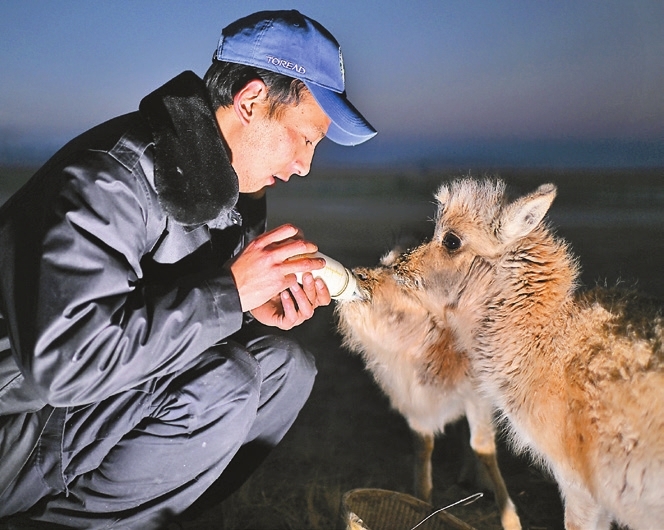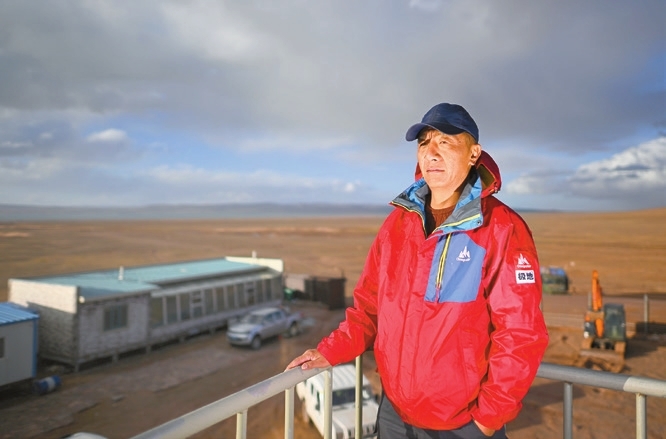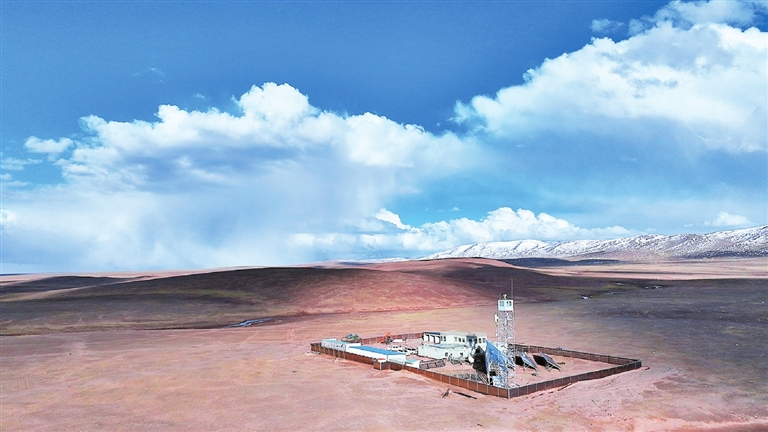



ON the far-flung eastern edge of Northwest China’s Hoh Xil, nested within the sweeping expanse of the Sanjiangyuan National Park, an iconic Tibetan antelope statue stands sentinel against the vast azure sky. This enduring image signifies the first line of defense for this treasured nature reserve. The Sonam Dargye Protection Station, unveiled in 1997, stands as a bastion of wildlife conservation and a tribute to its eponymous hero — a revered steward of Hoh Xil’s precious fauna. Sonam Dargye, who dedicated his life to wildlife conservation as a committed government official, met a tragic fate at the hands of poachers in 1994, sacrificing his life for the antelopes he fervently protected. More than three decades later, the legacy of Sonam Dargye has not diminished but rather galvanized a new wave of protectors. Among them is Tsering Lozang, a 24-year-old ranger whose life path was shaped by Dargye’s valor. “His story was part of my childhood, profoundly stirring my resolve. It was his footsteps I aimed to tread, committing myself to the guardianship of Hoh Xil,” said Tsering, recalling his aspirations that led him to join the ranks after university graduation last June. While the inspirational tales of their predecessors fuel the rangers’ spirits, it’s the surge of technological advancements expediting the conservation of biodiversity in Hoh Xil that equips these young guardians. In this remote highland setting, often referred to as the “roof of the world,” such technological tools have become integral to their daily patrols. Tech empowers conservation On this year’s World Wildlife Day, marked on Sunday, accolades were given to the substantial conservation strides made in these sparsely populated regions towering more than 4,600 meters in elevation. Additionally, the deployment of cutting-edge technology showcased its indispensable role in the stewardship of the area’s diverse wildlife. Sequestered within the vast reaches of the Qinghai-Xizang Plateau, Hoh Xil once faced considerable communication challenges, limited to signals near the Qinghai-Xizang Highway. The prospect of rangers sending regular updates or sharing glimpses of the native Tibetan antelopes in their natural habitat was, for a long time, but a distant dream. “Entering the reserve,” recalled Tsesogyal, a 28-year-old ranger, “meant severing ties with the outside world — Zonag Lake area being the epitome of isolation, reachable only through costly satellite communications.” However, during the last breeding season of the Tibetan antelope, heralded a new dawn for connectivity with a 5G base station commencing operations near the Zonag Lake — the antelope’s calving grounds. This leap forward saw the 5G network’s embrace extend across this UNESCO-recognized natural heritage sanctuary, opening up opportunities to share the magnificent spectacle of antelope migrations with the world in real time. Local forest police official Zhan Jianglong likens the advancement to a dream. He recalled a time when the thought of having a cell signal in the wilderness was far-fetched. Today, the area enjoys an uninterrupted 5G connection with astonishingly high data speeds peaking at 860 Mbps. “It used to be daunting to connect with the outside world. Now, within Zonag Lake’s vicinity, everyone can effortlessly reach out to their families and coworkers,” Zhan said. The groundbreaking efforts started in 2016 when Qinghai Province set forth to construct an extensive, networked, and real-time observation system designed to fortify the oversight and preservation of these pivotal ecological havens. AI and a future vision Dubbed the “eco-window,” the comprehensive remote monitoring system of the Sanjiangyuan National Park features 76 surveillance nodes scattered across its majestic terrain. These observation points offer a powerful lens through which the intricate migratory patterns of the Tibetan antelope are meticulously tracked and studied. Sun Lijun, deputy director of the Sanjiangyuan National Park administration, confirmed the deployment of the remote monitoring system as a crucial stride toward advanced eco-protection. Reflecting on the strategic placement of the 5G base station in the Zonag Lake vicinity, Sun highlighted its efficacy in enhancing oversight of the Tibetan antelopes, particularly during their migratory and birthing periods. Guo Xuehu, deputy chief of the Zonag Lake Protection Station, notes that each year, numerous Tibetan antelope calves are safeguarded and nurtured back to health after becoming estranged from their herds. “Video calls have revolutionized our rescue operations,” Guo explains, “allowing us to consult veterinarians for remote guidance in treating ailing calves.” “Livestreaming Tibetan antelope migration and birth also helps foster public awareness for biodiversity conservation,” Sun added. Looking ahead, local authorities are planning an expanded network of 5G installations within the reserve. These advancements, along with a trifecta of remote inspection, ground-level patrols, and aerial surveillance, will fortify the park’s defenses against poaching and enhance its monitoring capacity. Echoing the significance of Tibetan antelope research as a vital component for protecting the plateau’s vast biodiversity, Lian Xinming, a researcher at the Northwest Institute of Plateau Biology of the Chinese Academy of Sciences, applauds the recent technological leaps. Lian envisions a future where artificial intelligence will further streamline the monitoring of antelope populations, reducing the need for extensive manpower, refining accuracy in data collection, and thereby boosting the efficacy of both ecological conservation and scientific study in the unyielding wilderness of Hoh Xil. (Xinhua) | 
